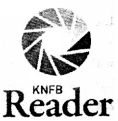题目内容
17.Etymology,the study of words and word roots,may sound like the kind of thing done by boring librarians in small,dusty rooms. Yet etymologists actually have a uniquely interesting job. They are in many ways just like archaeologists (考古学家) digging up the physical history of people and events. The special aspect of etymology is that it digs up history,so to speak,through the words and phrases that are left behind.The English language,in particular,is a great field to explore history through words As a language,English has an extraordinary number of words. This is partly due to its ability to adapt foreign words so readily. For example,"English"words such as kindergarten (from German),croissant (from French),and cheetah (from Hindi) have become part of the language with little or no change from their original sounds and spellings. So English-language etymologists have a vast world of words to explore.
Another enjoyable thing about etymology for most word experts is solving word mysteries(谜). No,etymologists do not go around solving murders,like the great detective Sherlock Holmes. What these word experts solve are mysterious origins of some of our most common words
One of the biggest questions English language experts have pursued is how English came to have the phrase OK. Though it is one of the most commonly used expressions,its exact beginning is a puzzle even to this day. Even its spelling is not entirely consistent-unless you spell it Okay,it is hard even to call it a word.
Etymologists have been able to narrow OK's origin down to a likely,although not certain,source(来源). It became widely used around the time of Martin Van Buren's run for president in 1840. His nickname was Old Kinderhook. What troubles word experts about this explanation is that the phrase appeared in some newspapers before Van Buren became well known. It is likely that Van Buren could be called its primary source Etymologists will doubtlessly keep searching for the initial source. However,it is clear that OK's popularity and reputation have topped those of the American president to whom it has been most clearly linked.
63. The author mentions the words like"croissant"in Paragraph 2to indicateC.
A. words have changed a lot in the two languages
B. what English-language etymologists are exploring now
C. English has absorbed many words from other foreign languages
D. the English vocabulary is difficult to the non-English-speaking people
64.The underlined word"pursued"in Paragraph 4meansB.
A. looked upon B. dug up C. put in D. set down
65. We can learn from the passage that etymologistsA.
A. discover the possible origin of words
B. help detectives to solve mysterious murders
C. write interesting stories for some newspapers
D. explore the English language as well as the recent events
66. What is the main purpose of the passage?C
A. To present the history of English words
B. To explain the procedure of an etymologist's job
C. To introduce the pleasure of the study of words and word roots.
D. To teach readers how to distinguish English and non-English words.
分析 本文是语言知识文章阅读.本文主要告诉我们英语单词或词根给人们带来学习语言的快乐.
解答 63.答案 C 考查词义推测题.解析 A在两种语言中话语已经改变了很多;B现在英文词源学者正在开发的东西;C英语已经引进了许多的外来语言的单词;D对于不说英语的人们英语词汇很难.根据文章的第二段的have become part of the language with little or no change from their original sounds and spellings可知英语已经引进了太多的外来词.故选C.
64.答案 B 考查词义推测题. A. looked upon看作;B. dug up挖掘;C. put in插进;D. set down放下.根据One of the biggest questions English language experts语言专家挖掘的最大问题之一,是OK一词,故选B.
65.答案 A 考查判断推理题. 根据文章最后一段的第一句话Etymologists have been able to narrow OK's origin down to a likely,although not certain,source和文章的第一句话Etymology,the study of words and word roots,may sound like the kind of thing done by boring librarians in small,dusty rooms可知语言学家就是发现词汇的来源.故选A.
66.答案 C 考查主旨大意题. 通读全文,并根据第二、三、四、五段可知介绍单词学习和词根的快乐.故选C.
点评 1)从意思上判断 在做题时最重要的是要读懂空白前后的句子,正确理解了这些句子后,根据意思的连贯性、逻辑性或者线索词从选项中选取正确答案.在读懂意思的基础上,再利用线索特征词等进一步确认答案.
2)从词汇上锁定线索 做保持对一些线索词的敏感是非常重要的,要好好关注空白前后的名词和动词,然后在选项中查找它们的近义词、反义词、同义词、同类词等.其次是一些专有名词,比如说数词、代词、时间、年代、地点/名称等.尤其是在读不懂句子的情况下,利用这样的线索词寻找答案是很有效的方法.
3)从关联词作为切入点 通常,英语的句段之间经常会运用关联词表示过渡和衔接,让文章的思路与更清楚、逻辑更连贯,因此文章中和选项中表示各种逻辑关系的路标性信号词在选择答案时都是很重要的线索.在做题时可将这三个层面的线索很好地结合起来.例如,在看到表示并列或递进关系的关联词时,一般表示前后句子的名词或句意具有同指性;而表示转折让步关系的词则往往表示前后句子的名词同指,但句意对立,或褒贬对立或肯否对立;而表示例证关系的词则意味着在举例之前或之后有表述概念或某一观点的句子,往往会有复数名词出现.

| A. | dated | B. | dating | C. | was dated | D. | which dated |
| A. | come up with | B. | put up with | C. | catch up with | D. | keep up with |
| A. | exhausting | B. | exhausted | ||
| C. | being exhausted | D. | having exhausted |
| A. | should have arrived | B. | should arrive | ||
| C. | had arrived | D. | should be arriving |
 A new computer program is being praised as a life-changer for blind people.The new program is known as the KNFB Reader app.It can help users listen to an audio read-back-the sound-of printed material including restaurant menus to studying papers in the classroom,which will make the blind people's life much easier.
A new computer program is being praised as a life-changer for blind people.The new program is known as the KNFB Reader app.It can help users listen to an audio read-back-the sound-of printed material including restaurant menus to studying papers in the classroom,which will make the blind people's life much easier.